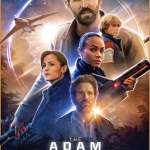A stark, perverse story of murder, kidnapping, and police corruption in a Mexican border town.
Roger Ebert once pointed out that something that was seldom said about Orson Welles’ masterpiece Citizen Kane was how much fun it is to watch. Visual innovator that he was, you could say the same about all the director’s films, particularly his 1958 noir classic Touch of Evil. Loosely based on the Whit Masterson novel Badge of Evil, Welles hadn’t directed a feature for one of the major Hollywood studios in over a decade and if Evil’s leading man Charlton Heston can be believed, it was he who insisted the filmmaker be given the reins, as he’d already been cast as the movie’s heavy, corrupt police office Hank Quinlan.
Despite his reputation of being “difficult,” Welles stayed on schedule and on budget during the shooting of this ironic mystery that finds Heston as Vargas, a special Mexican prosecutor who’s forced to work with Quinlan as they investigate a murder that takes place on the US-Mexico border. To say their styles differ is an understatement, as Vargas is a by-the-book operator, doggedly tracking down clues and evidence, while Quinlan follows his gut and has a reputation for questionable practices, including planting evidence when need be.
The mystery is only one element at play here as Vargas’s wife Susie (Janet Leigh) has been kidnapped and drugged by some of Quinlan’s cronies, using this as leverage should the detective from across the border gets out of line. Her ordeal proves to be a nightmare as she’s terrorized by a biker gang, led by the menacing Mercedes McCambridge.
From the first frame to the last, Welles’ touch is evident, from his innovative camera moves to his use of dynamic lighting. The beginning of the movie is justifiably cited as one of the great opening sequences in film history, a continuous tracking shot that covered five city blocks in Venice, California, Welles’ camera following a car with bomb in its trunk for three-and-a-half minutes before it explodes, igniting the movie’s plot with a bang. And while this is the most oft-cited scene in Evil, an equally impressive sequence occurs some 25 minutes later, a 12-minute, meticulously choreographed sequence that occurs in a cramped apartment. Crowded with characters wandering in and out of rooms, Welles’ camera effortlessly navigates the claustrophobic environment, the clues being uncovered so engrossing, the viewer is oblivious to the artistry and precision on display.
Editing the film himself, it was taken away from Welles by the brass at Universal Pictures after a screening was held that left them less than thrilled with what they’d paid for. Calling for reshoots, which Heston and Leigh only did because they were contractually obligated to do so, a 96-minute cut of the movie was released in February of 1958. Initially reviews were lukewarm though it was better received in Europe.
Irate that his vision had been altered, Welles penned a 58-page memo that outlined cuts that should be made and scenes that should be reinstated to clarify key elements in the story. Of course, his plea was ignored, though Universal did save this missive which would eventually prove fruitful as the studio eventually rereleased Evil cut together per Welles’ instructions, this version running 111 minutes.
Kino Lorber’s new Evil package is all you’ll ever need where analyzing the film in its many incarnations are concerned. Remastered in 4K, which brings a crispness and depth to Welles’ images that at times is astonishing, the package contains the original theatrical release as well as the 1998 cut version that was constructed to the director’s instructions. A third version, a 109-minute preview cut discovered in 1976, is also included. The differences in these differing cuts are telling and only serve as a testament to Welles’ instincts
Two documentaries, Bringing Evil to Life and Evil: Lost and Found, are also included as is archival footage featuring commentary from Heston and Leigh. Kino Lorber is to be commended for putting together a package as meticulous and thorough as this, a celebration of a seminal cinematic masterpiece, wonderfully preserved here for future generations to discover.




